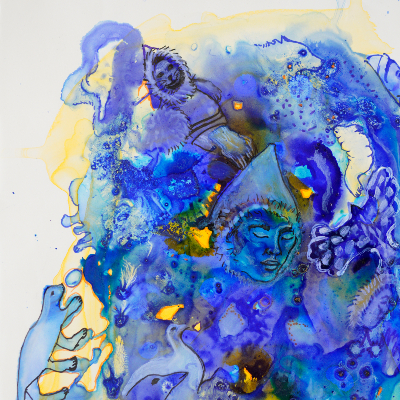Nunatsiavut
The southern most of all of the Inuit homelands, Nunatsiavut is found on the extreme north eastern corner of the continent of North America. It is where North meets East, on the shores of Northern Labrador. Translated from Inuktitut, “Nunatsiavut” means “Our Beautiful Land” and it is apparent why the Labrador Inuit have chosen this name for their home. Straddling the tree line, Nunatsiavut is a land of extremes, with vast black spruce forests filled with snaking rivers in the south, and stark barren mountains falling into the sea in the north. Innumerable islands dot the often frozen shore. Nunatsiavut's climate is regulated by the sea ice and the frigid Labrador Current which brings colder waters and temperatures from the Arctic.
Between 600 and 800 years ago, Inuit first migrated to what is now Nunatsiavut from the Western Arctic. Descended from the Thule people, their technology and adaptations allowed them to thrive and expand across the northern environment. They lived in semi-nomadic family groups, often sharing large winter settlements in areas of plentiful resources. It was these settlements that initially attracted European traders and missionaries who established posts in the 18th and 19th centuries. These posts and seasonal settlements would become the communities of Nunatsiavut today: Nain, Hopedale, Postville, Makkovik, and Rigolet.
The Inuit of Labrador were the first Inuit group to establish self-governance on December 1st, 2005, with the Nunatsiavut Inuit Government. The Nunatsiavut constitution guides the government based on principles of democracy and equality; preservation of culture and language; pursuit of a healthy society; pursuit of a sustainable economy; and the preservation of the lands, waters, animals, and plants. Although Nunatsiavut is still a part of the province of Newfoundland and Labrador, the Nunatsiavut Government has the ability to make laws and has the authority in the region over health, education, justices, community governance, culture and language.
With the creation of the Nunatsiavut Government also came the establishment of the Torngat Mountains National Park. The park, located in the northern tip of Nunatsiavut and spanning 9,700 square kilometres, was a gift from Nunatsiavut to the people of Canada for the signing of the land claims agreement. Inuit are ambassadors to the park and still maintain traditional practices of hunting and fishing within its borders.
Nunatsiavut is a vast region of over 72,000 square kilometres in size, a little larger than the Republic of Ireland, with just under 3000 people currently inhabiting this land. This does not mean that the land is empty, it is full of life and the Inuit are a part of that life. Many Inuit practice traditional lifestyles: hunting, fishing, or gathering berries and grasses. It is this traditional relationship between Inuit and the land that is at the heart of much of Inuit culture. Labrador Inuit are a modern people, who also enjoy many of the amenities of people in the South. Another 3,500 Nunatsiavummiut live outside of the Nunatsiavut land claims area, with the majority living nearby in Central Labrador.
Life is changing for Labrador Inuit, as it is across the North. At the same time as these changes present themselves, Nunatsiavut is gaining more autonomy, which allows the region to address challenges with the values of Labrador Inuit culture specifically in mind.





